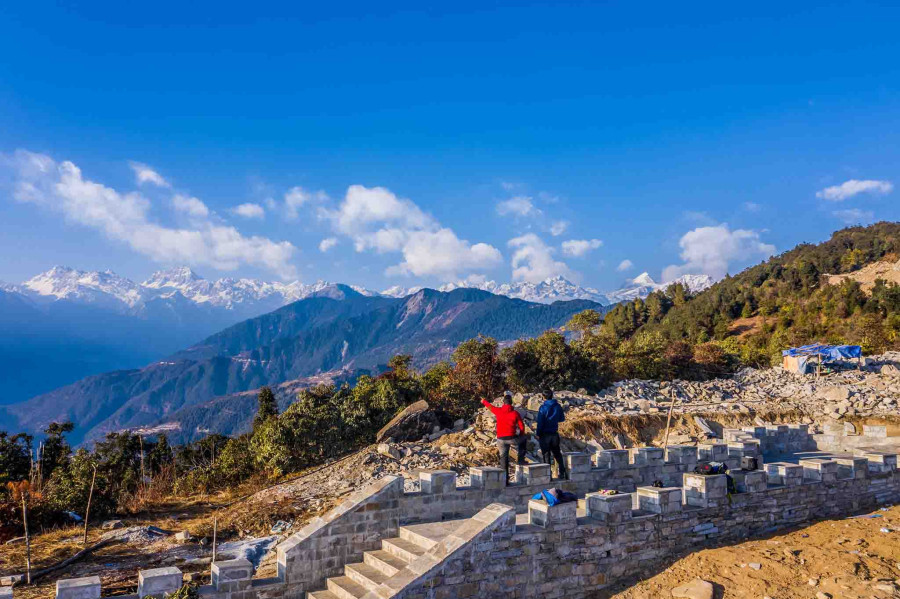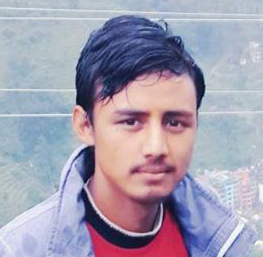Money
Helambu puts tourism centre stage by building 60-km long ‘Great Wall’
The wall will go all around the rural municipality and be used as a walking trail. Work on the project started four years ago.
Anish Tiwari
Helambu in the Himalayan foothills is well known for its delicious apples, Buddhist monasteries and trekking trails. But this rural municipality, located about 80 km north of Kathmandu, is planning to offer visitors something more.
Local officials have begun work on a wall that will be 9 feet wide and 60 km long which, they say, will be a scaled-down replica of the Great Wall of China.
Named the Himalayan Guru Rinpoche Great Trail, the wall will have parapets on either side that are 2.5 feet high. The wall will go all around Helambu and be used as a walking trail. Work on the Rs3 billion project started four years ago.
“The basic concept is to replicate China’s Great Wall to attract tourists,” said Nima Gyalzen Sherpa, chairman of Helambu Rural Municipality. “The trail is divided into six segments of 10 km each. Work is now being done on the first segment.”
But progress has been slow. Only 3 km of the trail has been built so far. According to locals, the Covid-19 pandemic delayed work. It was further delayed after the federal and provincial governments delayed the allocation of the budget.
The local government has aimed to finish 2 km of the trail in the next five years.
The trail is already starting to attract attention. According to Sherpa, droves of domestic and foreign visitors have been coming to the area.
The trail offers a view of around a dozen Himalayan peaks such as Semisidang, Dorje Lhakpa, Gang Chambo, Yuwa Peak, Gauri Shankar and others. The rhododendron forests and red pandas in Langtang National Park are also great attractions.
“The trail is the perfect place to observe breath-taking views and the local wildlife,” said Sherpa.
Sherpas make up a majority of the local population. The area is renowned for its handicrafts, especially wooden bowls.
The construction of the trail, which began from Ghopte Ghyang, a plateau at an altitude of 2,300 metres, has reached Guru Rinpoche Peak passing through Naagi Dada and Shermathang.
The rural municipality aims to develop the trail as a 9-day trekking trail connecting all the religious sites in the area. The trek’s highest point is 5,000 metres.
The trail will connect several religious and tourist destinations such as Shermathang, Jyomthang, Panch Pokhari, Ama Yangri, Dupu, Bhemthang, Pasang Giri, Gufu Pokhari, Jalansa, Dawalang Cave and Semesidang.
Currently, 50 workers are working at the construction site. The trail is estimated to be completed in 15 years.
Priority has been given to locally available materials to build the trail, according to Sher Bahadur Rai, sub-engineer at the project.
“We have used locally available rocks and kept the use of cement to a minimum,” said Rai.
The trail will have slate rock stairs, resting places and view towers at regular intervals.
Solar panels will also be installed all along the trail to provide lighting at night.
The local government has aimed to make the trail eco-friendly by protecting the geological condition of the area and planting trees on barren lands along the trail.
Passageways will also be built for the animals in wildlife areas, said the rural municipality.
“The trail has a historical connection with the Hyolmo region according to the ancient scriptures of the Vajrayana sect of Buddhism,” said Tashi Dongba Hyolmo from Shermathang, who is a researcher of Hyolmo culture.
“It is connected with Padmasambhava, the founder of the Nyingma sect, whom we call the ‘Second Buddha’.”
Padmasambhava, a prominent preacher of the Vajrayana sect of Buddhism, had meditated and spread his teachings in Helambu before moving to Tibet. His disciples later founded the Hyolmo community in Helambu.
“The religious texts of Buddhism order Rigzin Thinley Dudjom—a son of Tibetan spiritual leader Surya Sengen—and locals of Helambu to construct a wall around the area where Padmasambhava had meditated,” Hyolmo added.
“The concept of the trail is primarily inspired by the Dharma Chakra, the sacred wheel of Dharma in Buddhism.”
The rural municipality says that infrastructure for various adventure sports activities is being constructed to prolong the stay of visitors.
A 370-metre-long suspension bridge is being built at Charkathali to offer bungee jumping which will be 173 metres high. The rural municipality has also allocated spots for paragliding.
The municipality plans to host over a million visitors annually.
“Increased visitor arrivals will significantly support the livelihoods of the villagers,” said Sherpa.




 18.12°C Kathmandu
18.12°C Kathmandu















